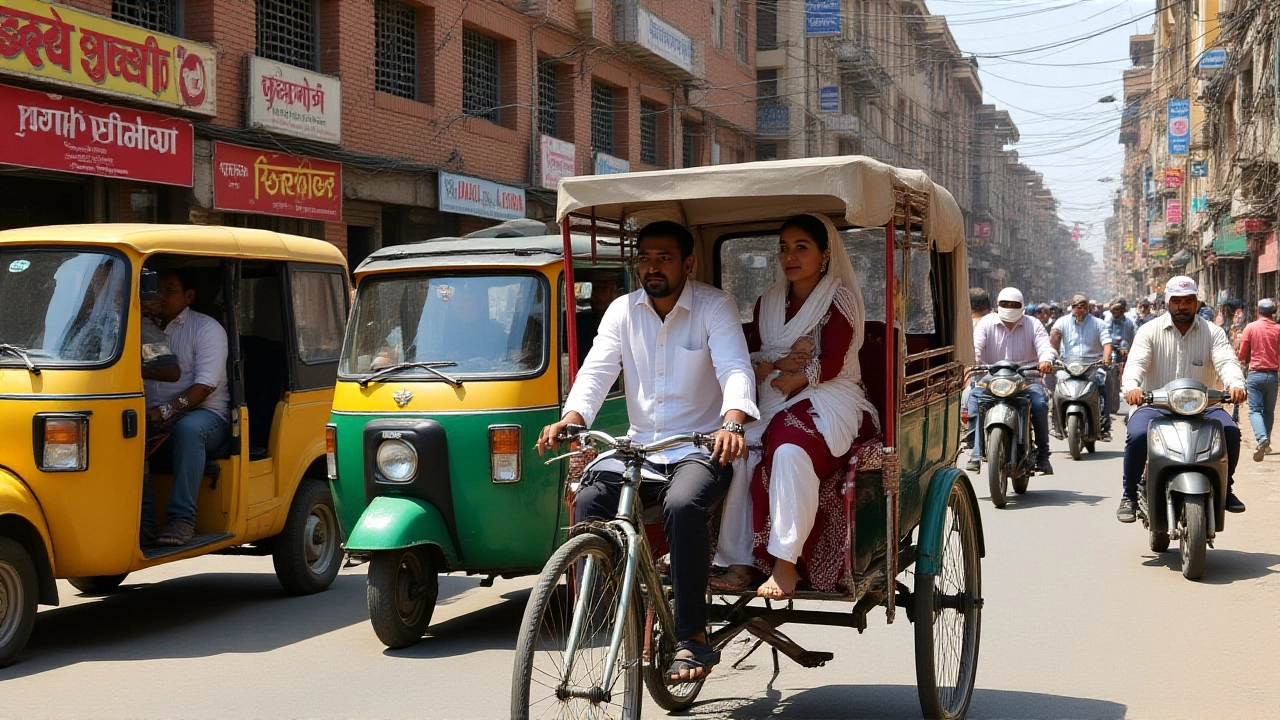On October 21, 2025, a red alert was sounded across Tamil Nadu after the India Meteorological Department warned of extremely heavy rain—more than 21 cm—looming over the state.
The alert, released at 13:30 IST from the department’s headquarters in New Delhi, covered a swath of south‑peninsular India from the 21st through the 24th, with the most intense downpours expected on the 22nd in Mayiladuthurai, Puducherry, Cuddalore, Villupuram and Chengalpattu districts.
Two well‑marked low‑pressure systems—one over the southeast Arabian Sea, the other over the southwest Bay of Bengal—are colliding, the latter poised to deepen into a depression, according to Times Now News. The result: a relentless monsoon pulse that has already battered Tirunelveli district, drowning acres of paddy fields and threatening a harvest that was supposed to be wrapped up weeks ago.
What’s Driving This Deluge?
The Meteorological Department’s Regional Centre in Chennai, situated in the Koyambedu suburb, has been tracking the twin systems since early October. Mrityunjay Mohapatra, the department’s Director‑General, told reporters that the convergence of the Arabian‑Sea low and the Bay‑of‑Bengal depression creates a “funnelling effect,” pushing moist air inland at unprecedented rates.
Temperatures are hovering between 18‑20 °C at night—about 1‑2 °C above normal—and 32‑34 °C by day, barely shifting the atmospheric balance. Surface winds remain weak, north‑bound at 0‑5 km/h in the morning, barely picking up after lunch. In short, the stage is set for rain to cling to the land rather than be whisked away.
Ground‑Zero: Tirunelveli’s Agricultural Crisis
Farmer Subramaniam of Kakanallur village, standing in a water‑logged field, described the scene as “paddy drowned before it could be cut.” Thousands of acres in the Ambasamudram region have been inundated, with water levels reaching up to 30 cm in some plots. The overlapping southwest and northeast monsoons have left no window for timely harvest, prompting Subramaniam to plead for doorstep procurement of rice to salvage what’s left.
Local officials confirmed that the floodwaters have already damaged irrigation channels, contaminating drinking water sources and raising the spectre of crop‑borne diseases. The Economic Times reported that market prices for raw rice have spiked by 12 % in nearby townships, a direct hit to already strained rural incomes.
Government’s Rapid‑Response Playbook
Deputy Chief Minister Udhayanidhi Stalin convened an emergency meeting at the Tamil Nadu Chief Secretariat in Chennai the same afternoon. He outlined a multi‑pronged plan: deployment of rescue teams, pre‑positioning of relief camps, distribution of bottled water, and a rapid‑assessment cell to monitor water‑body levels.
Chief Minister Muthuvel Karunanidhi Stalin echoed the directives, emphasizing “public safety, crop and livestock protection, and readiness for rescue operations.” Meanwhile, former Chief Minister Edappadi Kaveri Palanisamy warned coastal districts—including Chennai, the Cauvery Delta, and the northern coast—to brace for flash floods and to activate community‑level early‑warning systems immediately.
Impact Beyond the Fields
Beyond agriculture, the storm threatens urban infrastructure. Chennai, already grappling with high humidity and haze, is expected to see continuous heavy rain on the 21st, according to Times Now. The city’s drainage network, already overburdened from previous monsoon spikes, is likely to buckle, raising concerns about traffic paralysis and power outages.
Air‑quality monitors recorded an AQI of 175 on the morning of the 21st—classified as “unhealthy for sensitive groups.” The combination of rain, humidity, and particulate matter has set the stage for respiratory distress, especially among children and the elderly.

What Lies Ahead?
Projections suggest the Bay‑of‑Bengal depression could deepen further by the 23rd, potentially dragging the rain bands northward into the Cauvery Delta. Experts from the Indian Institute of Tropical Meteorology caution that if the system stalls, cumulative rainfall could breach historic records for October in several districts.
In response, the state government is earmarking an additional ₹2.3 billion (≈ $31 million) for post‑disaster rehabilitation, focusing on crop insurance payouts, infrastructure repair, and temporary shelters. The funds will be channeled through the Disaster Management Authority, with oversight from the Ministry of Home Affairs.
Historical Context: Monsoon Patterns and Climate Shifts
Tamil Nadu traditionally receives about 48 % of its annual rainfall during the northeast monsoon, spanning October to December. However, climate‑change analyses by the World Meteorological Organization reveal a trend toward more erratic monsoon onset and increased intensity of low‑pressure systems in the Arabian Sea.
Comparing the current event with the 2015 and 2020 monsoon extremes shows a 15‑20 % rise in peak daily rainfall totals, highlighting a growing vulnerability for the state's agrarian communities.
Key Takeaways for Residents
- Stay tuned to official updates from the India Meteorological Department and local disaster management offices.
- Keep emergency kits ready—bottled water, non‑perishable food, batteries, and basic medicines.
- Avoid low‑lying areas after heavy rain, especially near riverbanks and canals.
- Farmers should contact district agricultural officers for possible relief and insurance claims.
Frequently Asked Questions
How will the heavy rain affect farmers in Tirunelveli?
The inundation has already damaged thousands of acres of paddy, delaying harvest and raising the risk of crop loss. Farmers can apply for state‑sponsored insurance rebates and are being urged to store harvested grain in protected facilities to prevent further spoilage.
What safety measures should Chennai residents take?
Residents should keep flood‑ready kits, avoid walking through standing water, and monitor local authorities for evacuation orders. Power outages are possible, so charging devices in advance and having flashlights handy is advisable.
Why is the monsoon this year unusually intense?
Meteorologists attribute the intensity to two simultaneous low‑pressure systems—one over the Arabian Sea and a deepening depression over the Bay of Bengal. Climate data shows a gradual rise in sea‑surface temperatures, which fuels more moisture‑laden air currents.
What long‑term steps is the state taking to mitigate future monsoon damage?
The government is investing in modernizing drainage networks, expanding flood‑plain mapping, and promoting climate‑resilient crop varieties. Funding for these projects is part of the ₹2.3 billion emergency allocation earmarked for post‑disaster recovery.
When can residents expect the rain to ease?
Forecasts suggest that the heaviest rains will taper off by October 24, provided the Bay of Bengal system moves northward as projected. However, scattered showers may linger in coastal districts for several more days.
